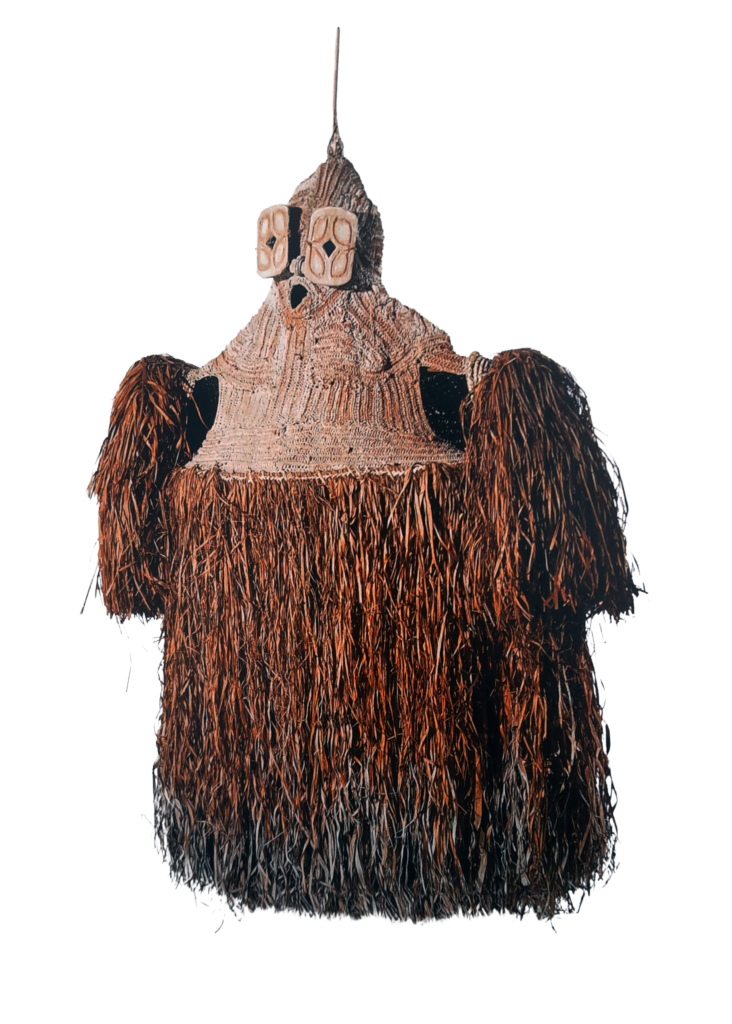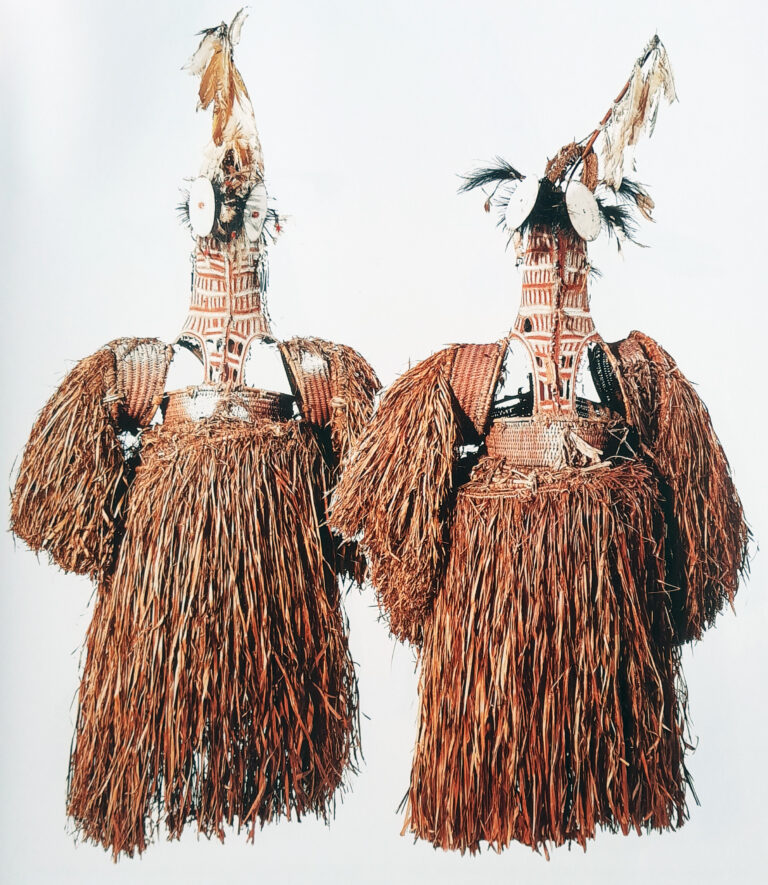Just as Asmat artists make the invisible world visible to the senses with carvings of human figures symbolizing spirits, they make their presence visible to the senses as a lived experience by wearing clothing at ceremonies. Spirit dress ceremonies are known to occur in all Asmat groups. To date, however, no spirit dress ceremonies have been observed by outsiders, either among the Bras or among the Yupmakcain. In general, each makes two types of spirit dresses. The first represents the spirit of a deceased family member. A number of dresses are made for each festival. The second is one that depicts an orphan of a character from a story told in a mite. But the Emari Ducur people make an additional type of spirit dress. This dress represents an old woman from a myth.
The first is what various Asmat tribes call either bi jumbo, dat jumo, dato, det, or doroe. These garments represent spirits ranging in number from six to twenty who return to earth to celebrate festivals with the living before they are released and urged to leave for the spirit realm - the realm of Safan. At the end of the spirit clothing ceremony, the sago leaves on the skirt and sleeves are removed and burned.
Some clothes without coconut leaves are kept in the ceremonial house with all the power of the spirit to protect and strengthen the community. Others are taken to the forest and placed among the roots of banyan trees or among the young leaves of sago trees to rot. Trees treated in this way are sacred trees and cannot be cut down. The clothes kept in the ceremonial house are called biw by the Simai people and are used secretly, without being seen by women and children, to open other types of ceremonies. If another Yipai celebration is to be held, the Simai will again paint and decorate the clothes with sago palm leaves as a step towards incarnating new spirits, namely the spirits of people who have recently died. The headdress and the torso of these clothes are embroidered with twisted rope from large trees and painted in red and white. A wooden board carved with slits represents the eyes. Sleeves and a skirt made of strands of sago leaves complete the outfit. Some groups of people attach decorated poles to the crown.
The second is the clothing of a single spirit, called bunmar, manimar, or biu in various Asmat groups. The clothing represents the orphanage described in the myth and appears several days before the arrival of the spirits of the dead. The garment is woven from rattan slats in the shape of a woven cone; a skirt of sago palm leaf is attached to the cone. A flat piece of sago or a carved image of a turtle is attached to the top.
The third dress represents a woman, a mythological figure called Jiwawoka. She opened the Je ti ceremony for the Emari Ducur community. This dress consists of a conical head and torso made of strands of sago leaves tied with rattan blades to form five piles on the crown of the head. The eyes are made of oval carved planks decorated with rings of cassowary feathers. The bracelets and belt are woven from rattan strips dyed red. Strands of sago leaves are attached to this necktie to form long sleeves and a skirt.




